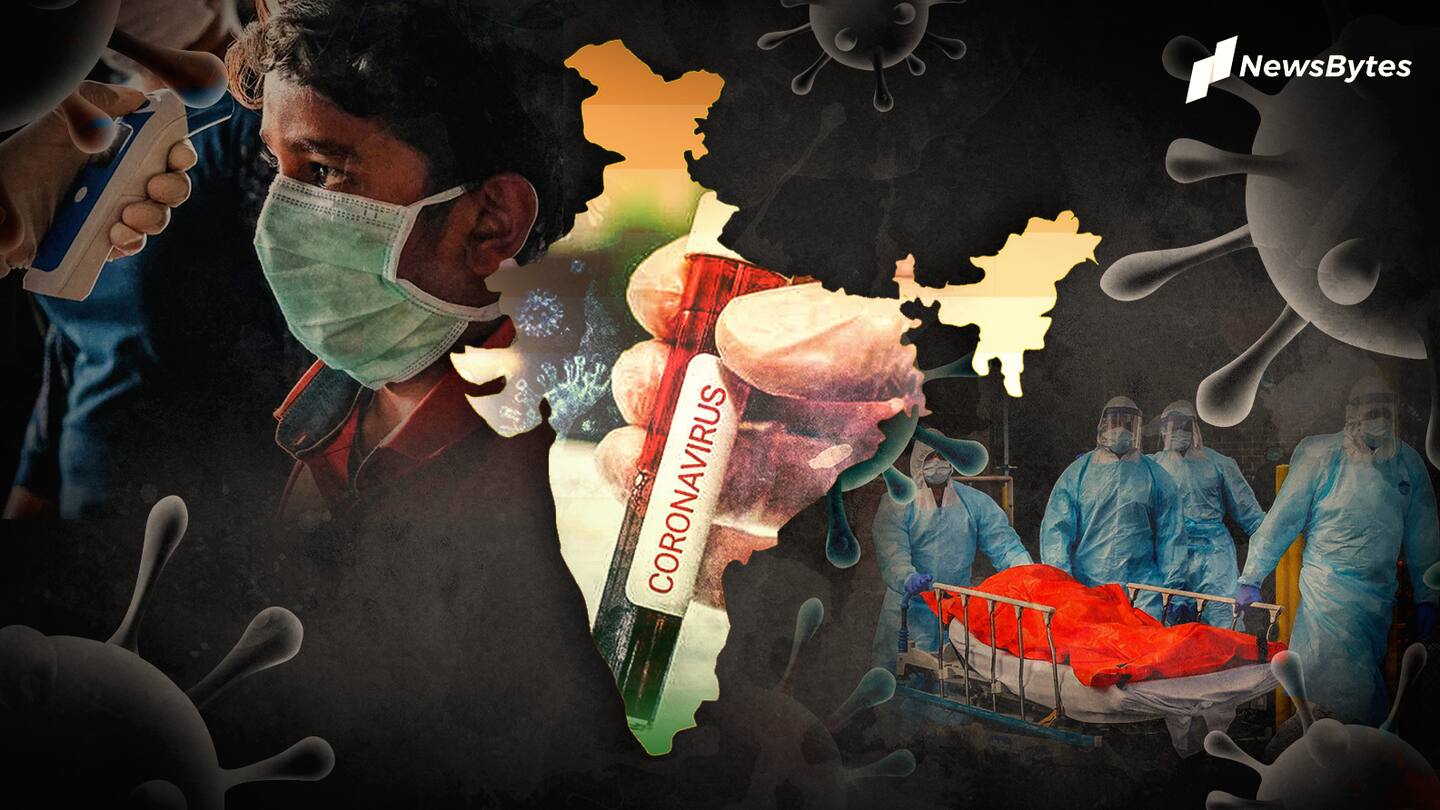
1 million coronavirus cases in India, death toll crosses 25,000
What's the story
The total number of coronavirus cases in India zoomed past the 1-million mark with a record spike being reported on Thursday. An addition of 36,247 fresh cases in the last 24 hours, took the tally of COVID-19 infections in the country to 1,004,652. 690 people died during the aforementioned time period, swelling the death toll to 25,594. Here are more details.
Cases
Next million cases could be added within a month
While the first one million mark was reached in four months, experts are certain the next million cases will be added within a month. The doubling rate is 20.6 days and with curbs related to movements and businesses lifted, a surge is obvious. It is pertinent to highlight that India moved from half a million mark to one million in just 20 days.
Do you know?
Only US and Brazil's caseloads are more than ours
Only two countries — Brazil and US — have more cases than India. In US, the infections' tally stands at 3,695,025 with 141,118 losing their lives to the deadly virus. Brazil has 2,014,738 coronavirus cases and 76,822 have passed away.
Details
COVID-19 tally in India could surpass tuberculosis infections' number
In the last week, an average of 30,076 cases/day were added in India. In the seven day period before that, an average of 23,895 cases/day were recorded. At this rate, India's coronavirus tally will surpass the number of TB infections reported in 2019 (2.4 million). About 79,000 died of tuberculosis and COVID-19's fatalities are expected to be in the same range.
Experts' take
Notably, experts had predicted a similar trajectory for India
Bhramar Mukherjee, the Head of Biostatistics at the University of Michigan, who was among the three academics to predict India would reach the 1-million mark by July 15, told HT the caseload will never go down to 100s. "With nearly 400,000 active COVID-19 cases, we will never be able to have a long enough lockdown to get the cases to 100s," she said.
Testing
Testing is important, now more than ever
On the road ahead, Mukherjee said aggressive testing remains crucial. "It is important to identify states and metros at nascent stages of growth and impose strong measures, including punctuated modulated lockdown. This cannot be done when infections are already leading to large case-counts," she said. Another expert, Dr. Jacob John, who headed the Virology Department at Christian Medical College, Vellore, also had similar opinions.
Quote
Dr. John said community transmission is obvious in some states
"There's no doubt that disease is widespread, with even community transmission obvious in certain states. The way ahead is to test as many people as possible, to be able to track and isolate those people who are infected so that spread is contained," he added.
Positivity rate
Naturally, India's positivity rate has also surged
The spike in COVID-19 cases can be understood through the positivity rate. From 7.7% in mid-June, the average weekly positivity rate rose to 10.1% this month. According to the World Health Organization (WHO), the positivity rate should ideally be between 8 and 12%. An extremely low number implies inadequate testing. To give a perspective, Maharashtra's positivity rate is nearly 20% and UP's less than 4%.
Silver lining
India's high recovery rate, low mortality rate provides some relief
Amid gloomy news items, what gives some hope is the recovery rate of India. The number of people who have defeated the disease trumps those who are infected by it. Moreover, the mortality rate is also low. Nearly 48% of India's cases are restricted to just two states — Maharashtra and Tamil Nadu. Further, merely 10 states account for 85% of the caseload.